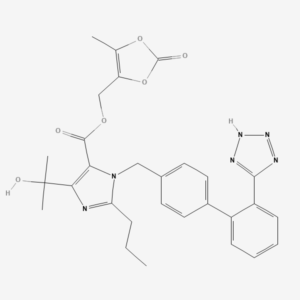The path to new medical breakthroughs is often marked by leaps in our understanding and management of diseases. In the realm of renal health, sevelamer carbonate stands as an impressive example of such a breakthrough. This potent medication has been transformational in handling kidney-related complications, particularly in dialysis patients. But what is sevelamer carbonate, and how does it contribute to this noble cause?
WHAT EXACTLY IS SEVELAMER CARBONATE?
Sevelamer carbonate is a robust, orally-administered medication that is employed primarily in the treatment of hyperphosphatemia—a medical condition characterized by abnormally elevated phosphate levels in the bloodstream. This situation is often encountered in patients with chronic kidney disease (CKD) who are undergoing dialysis. Sevelamer carbonate belongs to a unique group of medicines known as phosphate binders, which play a critical role in controlling phosphate levels in the blood.
UNRAVELING HYPERPHOSPHATEMIA
Hyperphosphatemia, an overabundance of phosphorus in the blood, is a common problem for individuals with chronic kidney disease. In a healthy state, our kidneys are remarkably adept at maintaining balance in the body’s phosphorus levels. They achieve this by filtering out excess phosphorus, which is then eliminated through urine. However, in chronic kidney disease, the kidneys’ ability to perform this critical function is significantly compromised. If hyperphosphatemia is not effectively managed, it can lead to severe complications, including bone disease, tissue calcification, and heart disease.
THE MECHANISM BEHIND SEVELAMER CARBONATE
The mechanism of action of sevelamer carbonate is both simple and ingenious. Rather than working on the kidneys or the bloodstream, it acts directly within the digestive tract, specifically in the stomach. Its primary function is to bind to dietary phosphorus present in consumed food. This binding process effectively prevents phosphorus from being absorbed into the bloodstream and instead directs it towards elimination via the feces. This strategy helps in controlling the concentration of phosphorus in the body, thus mitigating the severe complications associated with hyperphosphatemia.
CLINICAL EFFECTIVENESS OF SEVELAMER CARBONATE
The efficacy of sevelamer carbonate in managing hyperphosphatemia is well-established, backed by ample clinical trials and practical applications. One key observation is that sevelamer carbonate not only reduces serum phosphate levels but also maintains them within a specific target range. This dual action—reduction and maintenance—is crucial for patients with chronic kidney disease.
DISTINCT ADVANTAGES OVER OTHER PHOSPHATE BINDERS
Among its counterparts, sevelamer carbonate offers several distinctive advantages. One critical benefit is that it does not contain calcium—a notable contrast to some other phosphate binders. This difference is significant because an excessive intake of calcium can contribute to vascular calcification, a severe problem for patients with chronic kidney disease.
Another remarkable attribute of sevelamer carbonate is its cholesterol-lowering effect. Clinical studies, it has demonstrated the capacity to reduce low-density lipoprotein (LDL), colloquially referred to as “bad” cholesterol levels. By doing so, it helps to mitigate the risk of cardiovascular complications, a prevalent issue in patients with chronic kidney disease.
POTENTIAL SIDE EFFECTS AND CONTRAINDICATIONS
Like any other medication, sevelamer carbonate is not without potential side effects. Some common side effects include nausea, vomiting, and constipation. In rare cases, it may also cause severe stomach or abdominal pain, trouble swallowing, and unusual tiredness.
Sevelamer carbonate is contraindicated in individuals with bowel obstruction. Furthermore, it is imperative to inform healthcare providers about all the medications a patient is currently taking, as sevelamer carbonate can potentially interfere with their absorption.
LOOKING AHEAD: THE FUTURE OF SEVELAMER CARBONATE
The journey of sevelamer carbonate is far from over. With ongoing research focusing on optimizing dosages, minimizing side effects, and exploring new applications, the future of sevelamer carbonate appears promising. This medication offers a non-calcium, non-metal-based solution for controlling serum phosphorus levels in CKD patients on dialysis. By continually refining this medication, we can significantly enhance the quality of life for dialysis patients.
CONCLUSION
In sum, sevelamer carbonate is a vital tool in the fight against chronic kidney disease-related hyperphosphatemia. By appreciating its function, efficacy, benefits, and potential side effects, patients and healthcare providers can collaboratively navigate toward a healthier future. As always, while the drug provides numerous benefits, it’s important to consult with a healthcare provider to determine if it’s the right choice based on individual health circumstances. The journey towards better renal health continues, and sevelamer carbonate is undeniably a crucial companion on this path.




